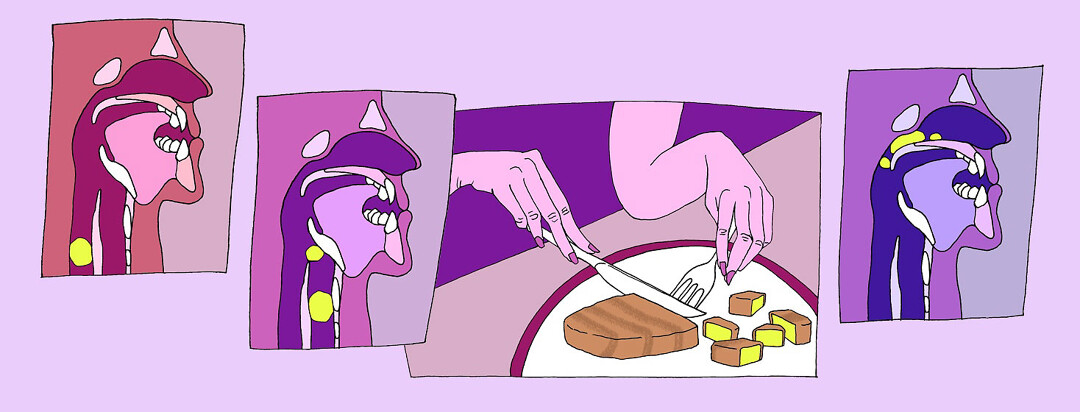Myasthenia Gravis Can Be Hard to Swallow
The first symptoms of myasthenia gravis often involve vision, but problems with swallowing can soon follow. Swallowing is a complex process that involves over 30 nerves and muscles. So it’s not surprising that muscle dysfunction has implications for the swallowing process.1,2
The swallowing process
Here’s a brief summary of the sequence:1
Touch receptors in your pharynx (back of the throat) trigger the autonomic nervous system (the ones you cannot control). The mass of food is propelled backward.
The hyoid ( a u-shaped bone in your throat) is elevated. That lifts your pharynx and larynx. "Vocal folds" contract to close the trachea for a short time. There can be no opening to the nose or trachea that would allow food to go up the nose or down into the lungs.
Muscles open the esophagus, then contract to force food down reflexively. Food passes through the esophageal sphincter (the circular muscle at the top of your stomach.)
What causes choking?
If there is a problem in any step in the process, food can enter the windpipe, and choking or aspiration can occur.1
Aspiration means food goes into the bronchial tubes and often into the lungs, where it can cause infection and pneumonia. It is easy to see that any muscle disfunction could disrupt the swallowing process.1,3
What is dysphagia?
While the process of swallowing seems complicated, the sense that something is wrong is clear to those who experience it. Dysphagia (improper swallowing) eventually occurs in 15–40 percent of patients with the generalized form of myasthenia gravis.4
Food may seem to be “caught” in the back of the throat, go "down the wrong pipe" causing coughing, or food to go up the nose. It’s uncomfortable and can cause feelings of embarrassment. And often, it is truly frightening. It’s also potentially very dangerous.
When food goes into the lungs it can cause bronchitis or aspiration pneumonia. People with myasthenia gravis may have weakness in the throat and neck muscles, so it becomes a more frequent complication.5
How to help yourself
Everyone should pay close attention to proper swallowing. The first steps to safety are relatively simple:6
- Eat slowly
- Don’t combine eating and animated conversation.
- Cut small pieces and avoid "crumby" foods.
- Choose foods that are moist and thick.
- If necessary, use food thickeners which are easy to find in powder or gel form. (There are even small packets that can be tucked into a purse or pocket.)
- Look for thickened liquids. You can buy water, juice, and coffee already thickened to honey or nectar consistency online.
Talk to your doctor
If you are having trouble swallowing, consult experts for analysis and specialized help.
- Ask your doctor for a referral to an ENT Larynx specialist and/or a speech therapist.
- Ask if a swallow study (active x-ray) would be valuable
- Get appropriate exercises and do them faithfully.
- The speech therapist may recommend certain positions for safer swallowing, like a cock of the head. Work with your team to understand what’s right for you.
Myasthenia gravis is hard to swallow. But help for the eating and drinking challenges it can bring is close at hand.

Join the conversation